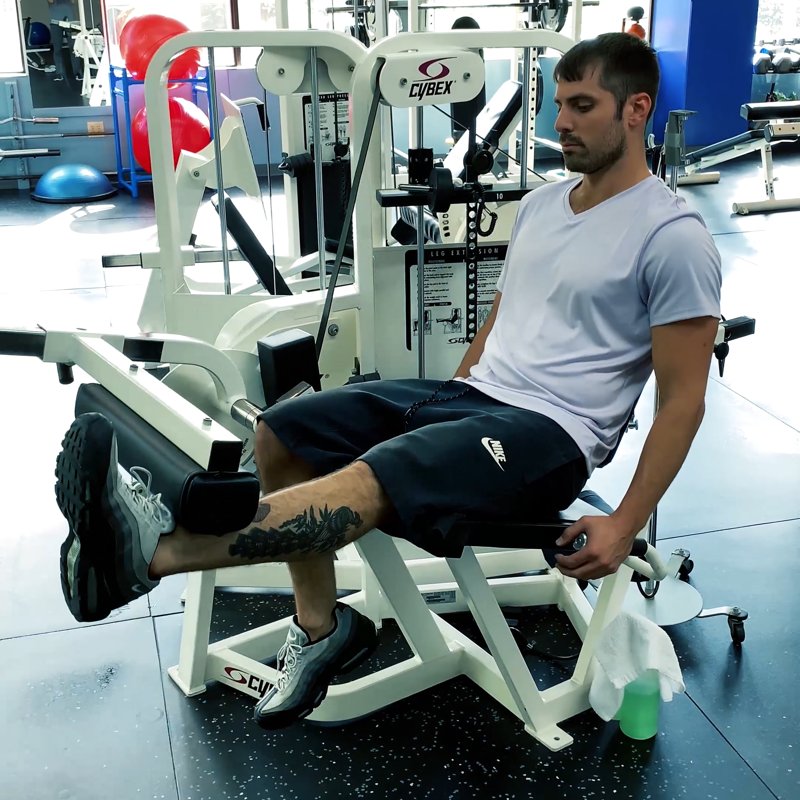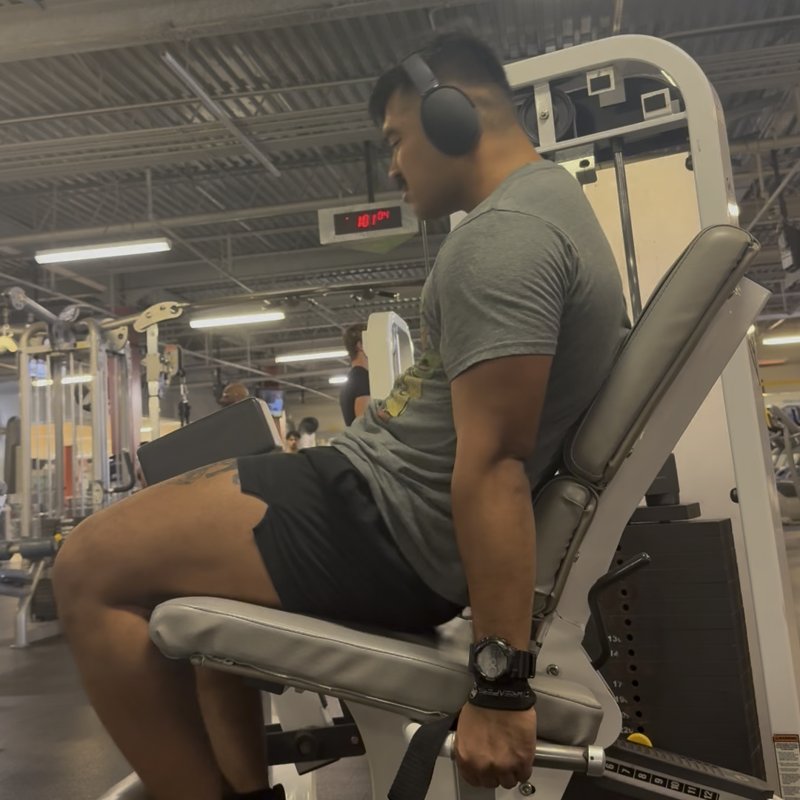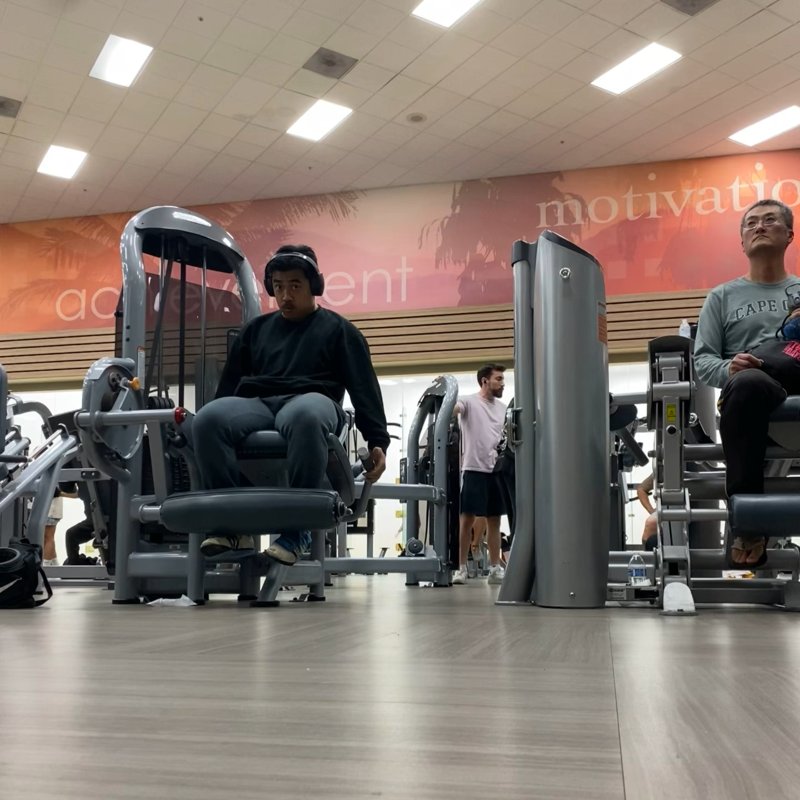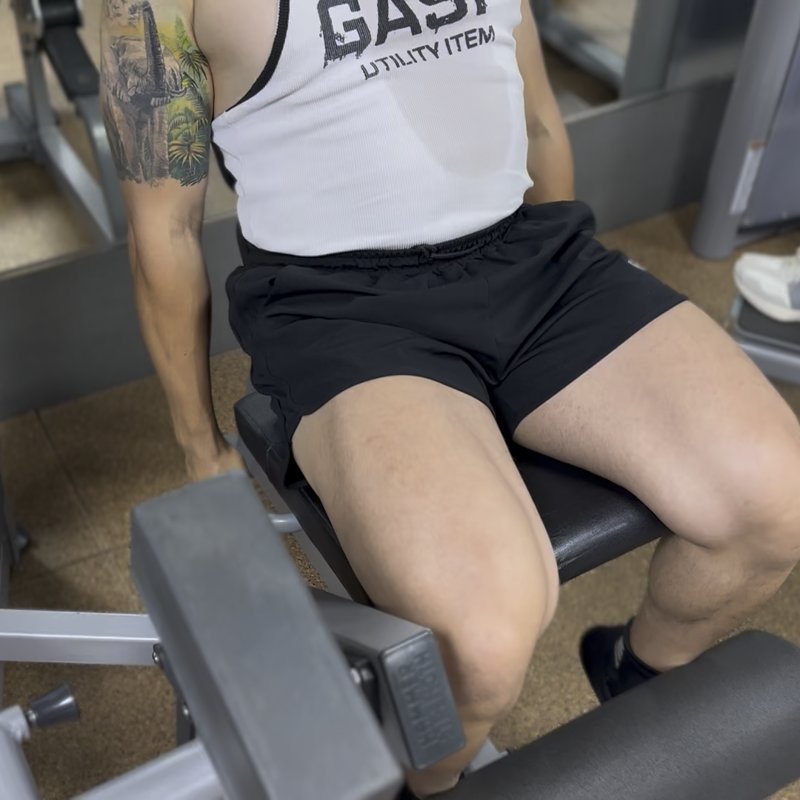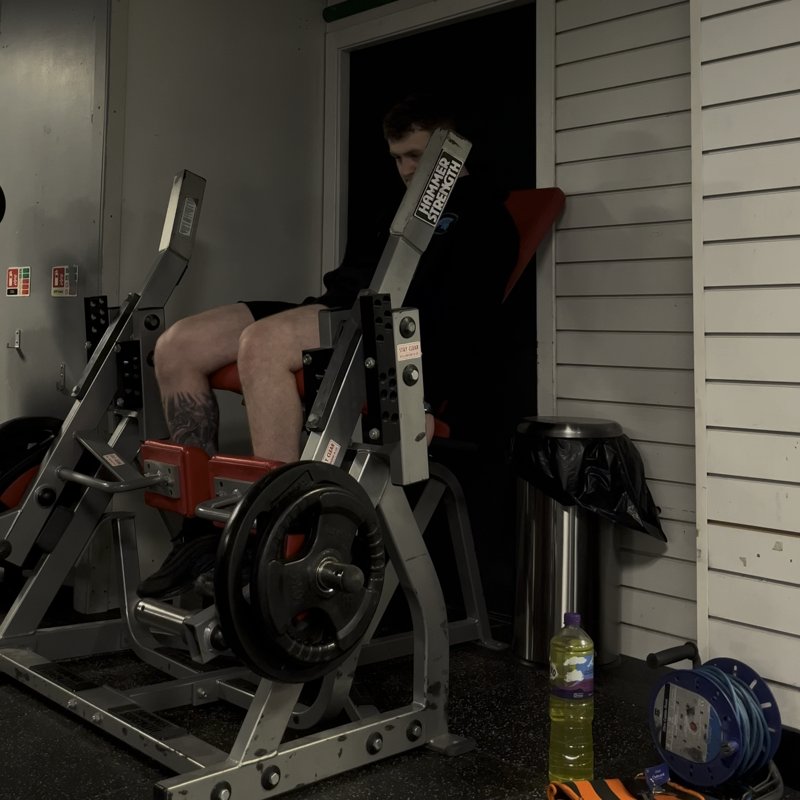Leg Extension: The Ultimate Guide
The leg extension is an isolation exercise that specifically targets the quadriceps muscles. This guide covers proper technique, variations, and programming strategies for both aesthetic development and rehabilitation purposes.

Quick Facts
Key Benefit
Directly targets the quadriceps with minimal involvement from other muscle groups
Primary Muscles
Secondary Muscles
Equipment
Machine
Difficulty
Beginner
Type
Isolation, Hypertrophy, Rehabilitation
In This Guide
Ready to master the Leg Extension?
Track your progress, see improvements over time, and build strength consistently.
Download GravitusThe Leg Extension is a focused isolation exercise that specifically targets the quadriceps muscles. Unlike compound movements such as squats or leg presses that work multiple muscle groups simultaneously, the leg extension isolates the quads, making it valuable for both aesthetic development and rehabilitation purposes. This machine-based exercise has been a staple in bodybuilding routines for decades due to its ability to directly stimulate the quadriceps with minimal involvement from other muscle groups. It's also commonly used in physical therapy settings to rebuild strength and function following knee injuries or surgeries. Whether you're looking to add definition to your quadriceps, break through a plateau in leg development, or rehabilitate from a knee issue, the leg extension can be a valuable addition to your training program when performed correctly. In this guide, we'll cover proper leg extension technique, common mistakes to avoid, programming recommendations, and how to incorporate this exercise safely and effectively into your training regimen.
Why the Leg Extension Is Worth Mastering
The leg extension offers several unique benefits that make it a valuable exercise for many training goals:
Quadriceps Isolation
Directly targets all four quadriceps muscles with minimal assistance from other muscle groups, allowing for focused development.
Mind-Muscle Connection
Helps develop a stronger neuromuscular connection with the quadriceps, which can enhance activation during compound movements.
Rehabilitation Tool
Provides a controlled environment to strengthen the quadriceps and knee joint function during recovery from injuries or surgeries.
Proper Leg Extension Form: Step-by-Step
Machine Setup
- Adjust the seat position so your knees align with the machine's pivot point.
- Position the ankle pad so it rests comfortably on your lower shins, just above the feet.
- Set the backrest to support your torso in an upright position, typically at a 90-degree angle.
- Ensure your back is firmly against the backrest, with hands gripping the handles at the sides of the seat.
The Movement
- Start with your knees bent at approximately 90 degrees, feet relaxed.
- Exhale as you extend your legs by contracting your quadriceps, raising the weight until your legs are almost fully extended (but not locked).
- Pause briefly at the top of the movement, focusing on squeezing your quadriceps.
- Inhale as you slowly lower the weight back to the starting position with control, maintaining tension in the quadriceps throughout.
- Repeat for the desired number of repetitions, maintaining control throughout the set.
Key Form Tips
Avoid Lockout
Keep a very slight bend in the knees at full extension to maintain tension and protect the knee joint.
Control the Negative
Lower the weight slowly (3-4 seconds) to maximize quadriceps engagement and growth stimulus.
Full Range of Motion
Allow for a complete stretch of the quadriceps in the starting position, typically around 90 degrees of knee flexion.
Foot Position
Point toes straight ahead or slightly outward for most people; experiment to find what targets your quads best.
Targeted Focus
Concentrate on contracting the quadriceps throughout the entire movement, especially during the lowering phase.
Avoid Momentum
Perform each repetition with controlled movement, avoiding swinging or using momentum.
Muscles Worked in the Leg Extension
Primary Muscles
- Rectus Femoris: The quadriceps muscle that runs down the center of the thigh and crosses both the hip and knee joints.
- Vastus Lateralis: The largest of the quadriceps muscles, located on the outer side of the thigh.
- Vastus Medialis: Located on the inner part of the thigh, with the distinctive teardrop shape near the knee.
- Vastus Intermedius: The deepest quadriceps muscle, located beneath the rectus femoris in the front of the thigh.
Secondary Muscles
- Tibialis Anterior: The shin muscle activates to dorsiflex the ankle during the exercise.
- Patellar Ligament: Not a muscle, but this ligament receives stress and training stimulus during leg extensions, potentially strengthening the knee joint connection.
Common Mistakes and How to Avoid Them
Lifting too heavy with momentum
Using excessive weight often leads to jerking movements and reduced effectiveness. Select a weight that allows you to control both the lifting and lowering phases without swinging or using momentum.
Fully locking out the knees
Complete knee lockout places stress on the joint and reduces tension on the quadriceps. Maintain a very slight bend at the top of the movement to keep tension on the muscles and protect your knees.
Leaning back excessively
Arching the back or lifting the hips changes the angle of pull and can place stress on the lower back. Keep your back firmly against the pad and avoid using body English to move the weight.
Incomplete range of motion
Not allowing the knees to bend to approximately 90 degrees reduces the effectiveness of the exercise. Use a full range of motion with control, unless specifically doing partial reps as an advanced technique.
Leg Extension Variations
Execution Variations
-
Single-Leg Extension
Performing the movement one leg at a time helps address strength imbalances between legs and can provide a more intense stimulus with lighter weights.
-
Paused Leg Extension
Adding a 2-3 second pause at the top of the movement increases time under tension and enhances the mind-muscle connection with the quadriceps.
Advanced Techniques
-

Drop Set Leg Extensions
Perform a set to near failure, then immediately reduce the weight by 25-40% and continue for additional repetitions until reaching a second failure point.
-

21s Technique
Perform 7 partial reps in the bottom half of the range of motion, 7 partial reps in the top half, then 7 full-range repetitions for intensive quadriceps training.
-

Pre-Exhaust Technique
Perform leg extensions immediately before compound leg exercises like squats or leg presses to pre-fatigue the quadriceps and enhance their recruitment during the compound movement.
FAQs About the Leg Extension
Leg extensions have been criticized for placing shear force on the knee joint, but research shows they can be safe and beneficial when performed properly. Keys to safety include using appropriate weight, avoiding complete lockout, maintaining control throughout the movement, and considering your individual knee health. For those with existing knee issues, consult a physical therapist or sports medicine professional. Many people can safely incorporate leg extensions as part of a balanced leg training program.
For general strength and muscle building purposes, it's typically best to perform compound exercises like squats and leg presses first, when energy and neural drive are highest, followed by isolation movements like leg extensions. However, using leg extensions before compound movements as a pre-exhaust technique can be beneficial for advanced lifters looking to increase quadriceps recruitment during those compound exercises.
For most recreational lifters, performing leg extensions 1-2 times per week is sufficient when included as part of a comprehensive leg training program. Frequency depends on your recovery capacity, overall training volume, and specific goals. In rehabilitation settings, higher frequency with lighter loads may be prescribed. Avoid training to failure on every set to ensure proper recovery between sessions.
Video Demonstrations

Log in to watch video demonstrations
Login to Watch3 video demonstrations available
Find more video demonstrations in the Gravitus app
Tips from the Community
-

Keep toes pointed up and squeeze quads at the top of the movement.
-

Hold for 5 secs every rep for extra growth
-

Slow end of eccentric, pause for a moment at bottom then explode for huge stimulus and pump
Track your progress with Gravitus
Download Gravitus to log your workouts, track your progress, and join a community of fitness enthusiasts.

Helpful Resources
One Rep Max Calculator
Find your one rep max for any exercise without maximal testing. Essential for developing effective strength training programs.
Calculate 1RMWorkout Programs
Follow structured workout programs created by fitness professionals to maximize your strength and muscle gains.
View Programs